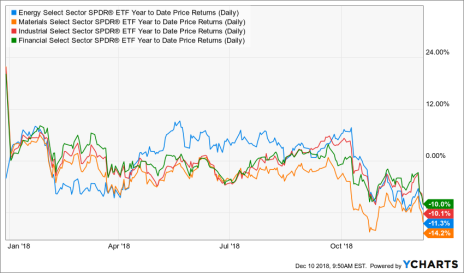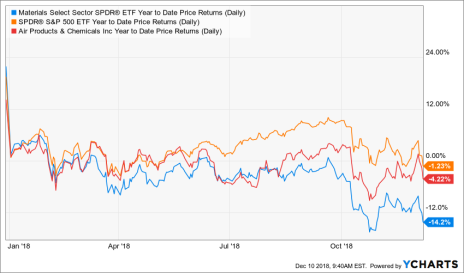People ask us the “trick” to making money in the stock market all the time.
Usually we tell them there isn’t one: the keys to success are a time-tested system, a plan, and the patience and discipline to follow it.
This time of year is the exception to that advice!
There is actually an easy “trick” you can use to make money in December and January that proves surprisingly reliable year after year. Later, I’ll have some end-of-year investing candidates to go with it. But first things first...
Tax-Loss Selling
The U.S. tax code requires investors to pay capital gains taxes on their investment profits each calendar year. For obvious reasons, most investors don’t enjoy forking over part of their earnings to the IRS in April—and capital gains taxes can be as high as 43% on profits from investments sold after less than a year.
Many investors do whatever they can to avoid these taxes, including selling losing positions that they might otherwise hang on to. When you sell a stock for a loss, you can use that loss to offset profits realized by selling winners the same year.
--------
Last Chance to Get:
Cabot’s 10 Favorite Low-Priced Stocks for 2019
Profit from a select group of low-priced stocks with immense short-term profit potential.
Just look at some of the short-term, double-digit profits our readers grabbed in previous years:
• Pulte Group (PHM)—up 40% in four weeks
• Hovnanian Enterprises (HOV)—up 30% in four weeks
• Melco Crown (MPEL)—up 32% in four weeks
• Gastar Exploration (GST)—up 23% in two weeks
• Seaspan Corporation (SSW)—up 29% in five weeks
We fully expect that investments in this year’s report will be just as rewarding.
Click here to reserve your copy.
--------
This “tax-loss selling,” as it’s called, tends to further depress the prices of the year’s underperformers in early December. Investors want to book their losses before the end of the year, so they can offset their profits from the same year. The effect is most noticeable in stocks that are the furthest in the red year-to-date.
The chart below shows this year’s worst-performing sectors—industrials, materials, energy stocks and financials—all chock full of potential investing candidates for tax-loss selling this month.
The Santa Claus Rally
The selling tends to dry up around the middle of the month, as investors get their portfolios in order and begin their Christmas vacations. And then over the Christmas break and into early January, many of these stocks bounce back, as bargain hunters begin snatching them up at the attractive low prices—sometimes even the same investors who sold them a couple of weeks earlier.
(When hedge funds do this, it’s called “window dressing,” because it prevents shareholders from seeing big losers reported as portfolio holdings at year end. Come January, fund managers feel free to own whatever they want again, and sometimes buy back the same stocks.)
This rebound is sometimes called the “Santa Claus Rally,” and it’s a remarkably reliable seasonal pattern. According to the Stock Trader’s Almanac - the experts on seasonality - the market rises between Thanksgiving and New Year’s about 70% of the time.
Come January, many of these rebounders continue to rise—small stocks and the prior year’s underperformers tend to do particularly well. In fact, studies have found that the worst-performing securities at the end of one year are some of the best-performing securities in the first quarter of the following year.
2019 Investing Candidates: Which Stocks Do I Buy?
As shown in the chart below, materials stocks have been the worst dogs in the market this year. The sector suffered big selloffs in February and October, and didn’t participate in the broad market rally in between. That makes them good candidates for tax-loss selling.
To weed out broken-down stocks, focus on materials stocks that are lower year-to-date but that are still outperforming the sector recently, like Air Products & Chemicals (APD). APD extracts and sells atmospheric gasses like oxygen, nitrogen and hydrogen to industrial companies and others, and yields 2.80%.
Some energy and industrial stocks could also make good end-of-year investing candidates, but until oil prices stabilize (they’ve slid 30% over the past two-plus months) it’s best to tread with caution.
Financial stocks are a safer bet going into the end of the year. The sector is down 10% year-to-date, so there are plenty of good tax-loss selling candidates, including some with high yields and strong earnings. Zions Bancorp (ZION), for example, yields 2.7% and is expected to report 7% revenue growth and 42% earnings growth this year.
Get the list of additional Cabot’s 10 Favorite Low-Priced Stocks to buy before year’s end. This special report will be published on Thursday, so reserve your copy today!
[author_ad]
*This post has been updated from an original version published in 2015.



